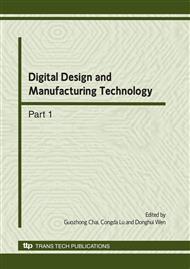p.140
p.145
p.150
p.155
p.160
p.165
p.170
p.175
p.179
Ergonomics Optimization of Human-Product Contact Surface Design Based on Stochastic Finite Element
Abstract:
An ergonomics optimization method of human-product contact surface design based on stochastic finite element was described. The shape of the contact surface between user and the product is the most complex content in product morphology design. Thinking of the individual needs of users, the stochastic finite element method was used to simulate the shape of product surface to meet the randomness of design variables, and the genetic algorithm was used to search the optimal surface solutions. And then a case of the seat back surface design of a driver chair was studied. The optimization results showed that the maximum pressure of the surface was decreased and the structure's reliability were guaranteed. The effectiveness of this ergonomics optimization method was verified.
Info:
Periodical:
Pages:
160-164
Citation:
Online since:
March 2010
Authors:
Price:
Сopyright:
© 2010 Trans Tech Publications Ltd. All Rights Reserved
Share:
Citation:


